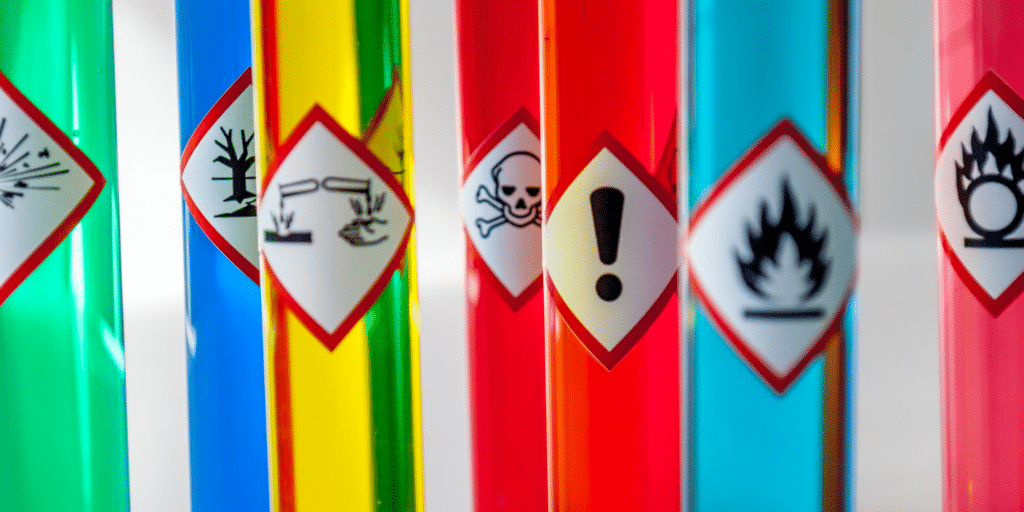Understanding Hazardous Waste Disposal in the Dental Industry

Properly disposing of hazardous waste is vital in the dental industry to safeguard the environment and the well-being of dental professionals and patients. This blog post will delve into the common types of hazardous waste generated in dental practices and provide practical guidelines for their safe and compliant disposal.
Types of Hazardous Waste in Dental Practices:
Dental Amalgam Waste: Dental amalgam waste, which contains mercury, poses potential environmental and human health risks if not properly managed. It is crucial to use amalgam separators, which capture amalgam particles and follow best practices for their collection and disposal. By implementing these measures, dental practices can prevent mercury contamination and contribute to a healthier environment.
Lead Aprons and Vests: Lead aprons and vests used in radiography shield patients from radiation. However, lead is a hazardous material that requires proper disposal. Dental professionals should be aware of the potential dangers of lead exposure and ensure that these protective garments are disposed of correctly. The appropriate disposal methods will help minimize the environmental impact and protect staff and the community.
Chemicals and Solvents: Chemicals and solvents in laboratories serve various purposes, such as cleaning, disinfection, and material manipulation. However, many of these substances can harm human health and the environment. Therefore, dental practices must prioritize the safe storage, usage, and disposal of chemicals and solvents. By adhering to recommended guidelines, professionals can prevent accidental exposures and reduce the environmental impact of these substances.
Developer and Fixer Solutions: Developer and fixer solutions used in photography contain chemicals that can harm aquatic life and water sources. Handling and disposing of these solutions properly is essential to prevent water pollution. Dental practices should familiarize themselves with the appropriate disposal methods, such as recycling or using specialized waste management services. By doing so, they can actively contribute to preserving water quality and protecting ecosystems.
Dental Radiographic Chemicals: Chemicals used in X-ray development require careful handling and disposal. Dental practices should comply with local regulations and guidelines for the safe disposal of these chemicals. Implementing proper waste management procedures, including following manufacturer instructions and using designated disposal containers, is crucial to prevent environmental contamination.
Compliance with Regulatory Requirements:
OSHA and EPA Regulations: Dental practices must comply with Occupational Safety and Health Administration (OSHA) and Environmental Protection Agency (EPA) regulations related to hazardous waste management. These regulations aim to ensure the safety of professionals and protect the environment. Familiarize yourself with the specific requirements and implement appropriate practices to maintain compliance.
Recordkeeping and Documentation: Maintaining accurate records of hazardous waste disposal activities is essential for regulatory compliance. These records include manifests, tracking forms, and certificates of destruction. By documenting the proper disposal of hazardous waste, such practices can demonstrate their commitment to responsible waste management and adhere to regulatory requirements.
Best Practices for Hazardous Waste Disposal:
Waste Segregation: Proper waste segregation is critical in dental practices to prevent cross-contamination and ensure compliance with regulatory requirements. Separate hazardous waste from non-hazardous waste and use appropriate containers for each waste stream. Then, clearly label the containers to minimize the risk of improper disposal.
Secure Storage: Securely storing hazardous waste is crucial to prevent leaks, spills, and unauthorized access. Use leak-proof containers and store them in designated areas away from patient care areas. Ensure proper labeling and signage to identify hazardous waste storage areas.
Disposal Options: Dental practices have several disposal options for hazardous waste. Engaging licensed medical waste disposal services is a common and reliable method. Additionally, participating in approved recycling programs for specific materials can reduce the environmental impact of waste disposal. Research local disposal options and choose the most appropriate one for your practice’s needs.
Staff Training and Education: Properly training staff on the handling and disposing of hazardous waste materials is vital for ensuring safety and compliance. Provide comprehensive training programs that cover waste segregation, storage protocols, and disposal guidelines. Ongoing education will empower your team to actively participate in maintaining a safe and environmentally responsible dental practice.
Conclusion: Proper management and disposal of hazardous waste in the dental industry are paramount for safeguarding the environment, preventing contamination, and ensuring the safety of professionals and patients. Then, by adhering to regulatory guidelines and implementing best practices, dental practices can contribute to a safer and more sustainable healthcare environment. Finally, remember to adapt and customize the information provided in this blog post to align with your location’s specific practices, regulations, and guidelines.
References:
https://www.ada.org/en/member-center/oral-health-topics/dental-amalgam-waste
https://www.epa.gov/dental-effluent-guidelines/hazardous-waste-management-dental-practices
https://www.drca.org/guidelines-safe-handling-disposal-dental-radiographic-chemicals
https://www.dentalcompliance.com/compliance-osha-epa-regulations-dental-practices


